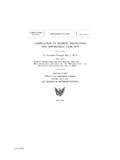Transcription of SOCIAL PROTECTION - Asian Development Bank
1 OUR FRAMEWORK Policies and StrategiesAsian Development Bank6 ADB Avenue, Mandaluyong City0401 Metro Manila, Stock No. 061603 Printed in the PhilippinesSOCIAL PROTECTIONiOUR FRAMEWORK Policies and StrategiesSOCIAL PROTECTIONiiPublished by Asian Development Bank, July 2003. This is a typeset versionof the official policy paper approved by the Asian Development Bank Boardof Directors on August is a reprint of the SOCIAL PROTECTION Strategy (SPS) of the Asian Devel-opment Bank, approved in 13 September 2001. SOCIAL PROTECTION is a keystep in ADB's battle to have Asia and the Pacific region "free of poverty."The SPS spells out the scope of SOCIAL PROTECTION and commitment of theADB to develop priority interventions in five major elements: labor market policies and programs designed to generate employment,improve working conditions and promote the efficient operations; SOCIAL insurance programs to cushion the risks associated with un-employment, ill health, disability, work-related injury and old age; SOCIAL assistance and welfare service programs for the vulnerablegroups with inadequate means of support, including single mothers,the homeless, or physically or mentally challenged people.
2 Micro and area-based schemes to address vulnerability at the com-munity level, including microinsurance, agricultural insurance , socialfunds and programs to manage natural disasters; and child PROTECTION to ensure the healthy and productive Development of the SPS has started making significant progress andcan be seen at the ADB web site ( ). Thefirst annual Progress Report can be accessed at Social_ Comments and suggestionsmay be sent to email: Van HeeswijkDirector GeneralRegional and SustainableDevelopment DepartmentivvContentsAbbreviations of SOCIAL PROTECTION 5A. SOCIAL risks and SOCIAL PROTECTION 5B. Characteristics of the Asia and Pacific region 8C. The components of SOCIAL PROTECTION 14D. SOCIAL PROTECTION systems in the Asia and Pacific region 24E.
3 The experience of ADB and other aid agencies 25 III. Priorities for SOCIAL PROTECTION 33A. Identifying country priorities 34B. Strategic principles for SOCIAL PROTECTION interventions implications 49A. Investing in SOCIAL PROTECTION 49B. Operational implications for ADB 52C. Staffing and staff skills 57D. Operational assignments and responsibilities 58E. Strategic partnerships and coordination among Development agencies 58F. Monitoring progress 59 Appendixes 60viAbbreviationsADBA sian Development BankCBOcommunity-based organizationDFIDD epartment for International Development (of the United Kingdom)DMCdeveloping member countryHIV/AIDS human immunodeficiency virus/acquired immunodeficiency syndromeIADBI nter-American Development BankILOI nternational Labour OrganizationIMFI nternational Monetary FundNGOnongovernment organizationTAtechnical assistanceSPSS ocial PROTECTION StrategyWBWorld BankUNUnited NationsUNDPU nited Nations Development ProgrammeUNICEFU nited Nations Children s Fund1I.
4 PROTECTION is defined as the set of policies and programsdesigned to reduce poverty and vulnerability by promoting efficient labormarkets, diminishing people s exposure to risks, and enhancing theircapacity to protect themselves against hazards and interruption/loss SOCIAL PROTECTION consists of five major elements: (i) labor mar-kets, (ii) SOCIAL insurance , (iii) SOCIAL assistance, (iv) micro and area-basedschemes to protect communities and (v) child PROTECTION . When imple-mented properly, these policies and programs can make a major contribu-tion to the overarching goal of the Asian Development Bank (ADB) ofreducing poverty. SOCIAL PROTECTION ,as an integral part of SOCIAL develop-ment, one of the three pillars of theADB Poverty Reduction Strategy,2aims to assist individuals to break thecycle of poverty and enhance theADB s developing member countries(DMCs) quality of growth by invest-ing in human capital, increasing pro-ductivity, and reducing citizen s vul-nerability to events underscore the need for greater attention to SOCIAL pro-tection issues in the Asia and Pacific SOCIAL safety net and SOCIAL security are sometimes used as an alternative to socialprotection.
5 Of the two terms, SOCIAL PROTECTION is the most commonly used internation-ally. The term SOCIAL safety net appears to have a less precise meaning; some people useit to mean the whole set of programs and policies discussed in this strategy, others use it torefer only to welfare programs targeted to the poor. On the other hand, the term socialsecurity is generally used to refer to the comprehensive mechanisms and coverage inhigh-income countries, and is less applicable to new areas such as community and area-based : Fighting Poverty in Asia and the Pacific: The Poverty Reduction Strategy of theAsian Development Bank, 19 Asia and Pacific Region has halfof the world s population. Of the to-tal billion, 900 million are poor(30%), billion are children andyouth (40%) and billion live inrural areas (60%).
6 These popula-tions are highly vulnerable. SocialProtection systems should be builtto address these (i)The countries affected by the Southeast Asia crisis have discoveredthat inadequate and underdeveloped SOCIAL PROTECTION systems haveexposed their working populations to excessive risk, increased theincidence of poverty, and threatened to undermine longer term humancapital investment efforts.(ii)Transition economies are discovering that the comprehensive socialprotection systems they traditionally maintained have become tooexpensive to sustain, are poorly designed for a market economy, andcreate barriers to further economic Development .(iii) Modernization has been accompanied by a process of SOCIAL mobility,migration, urbanization, and disintegration of family and communitynetworks.
7 Household informal safety nets are no longer adequate modernization requires the provision of SOCIAL PROTECTION systems forthe workforce to ensure higher productivity gains, increased domes-tic demand, and economic growth.(iv) Globalization, while increasing the opportunities for growth, will alsoincrease the risks of future macroeconomic shocks. As unemploymentand poverty result from economic downturns, the adequacy of socialprotection and assured future progress in SOCIAL Development areissues in the forefront of the Development agenda of many kinds of reforms and policies are needed in different econo-mies. Where SOCIAL PROTECTION systems have become too expensive andare no longer appropriate to serve a country s vulnerable populations, theyneed to be restructured and consolidated.
8 Where these systems are inad-equate to deal with the major risks faced by rural and urban populations, SOCIAL PROTECTION needs to be extended and expanded. The vision of theADB s SOCIAL PROTECTION Strategy (SPS) is the provision of SOCIAL protectionto all citizens of the Asia and Pacific region through the Development ofsustainable, statutory programs with universal coverage to effectively assistDMCs to reduce poverty, achieve growth by enhancing productivity, andcreate opportunities for individual strategy paper reflects three years of research and consultationsat ADB and its DMCs, to build strategies for effective SOCIAL PROTECTION forthe Asia and Pacific region. The paper begins with a discussion of the socialprotection needs in Asia and the Pacific, the components of SOCIAL protec-tion, the SOCIAL PROTECTION systems in the region, and the work of ADB andother Development agencies.
9 It then focuses on the criteria that might be3used to prioritize SOCIAL PROTECTION interventions in a determined DMC. Socialprotection policies will vary from one country to another owing to varia-tions in needs, available resources, institutions, and the political economyof reforms. Once a specific intervention is chosen, or a mix of them, selectedprograms will have to attend to critical principles such as coverage, target-ing of vulnerable populations, sustainability, good governance, and institu-tional and political capacity for reforms, this topic is explored next. Thepaper ends with the recommendations to ensure proper implementationof this SOCIAL PROTECTION Strategy in ADB s Overview of socialprotectionA. SOCIAL risks and SOCIAL Asian and Pacific region has half the world s population.
10 Of thetotal billion, 900 million are poor (30%), and billion are children andyouth (40%). Thus, a main Development challenge for the region is to achievesufficient sustainable growth to secure the inclusion of the poor and youngnew entrants in the Development process. However, growth alone is not asufficient condition for generating inclusive societies. Populations, house-holds, and individuals face various risks that can plunge them into poverty,so societies have to take steps to reduce their vulnerability and to cope withthe effects when shocks occur. Risks may include natural disasters; civilconflicts; economic downturns, of which the 1997 Asian financial crisis isthe most recent example; or idiosyncratic household reversals, such as cropfailures, unemployment, illness, accident, disability, death, and old age,threatening the future of the household and its members.
















